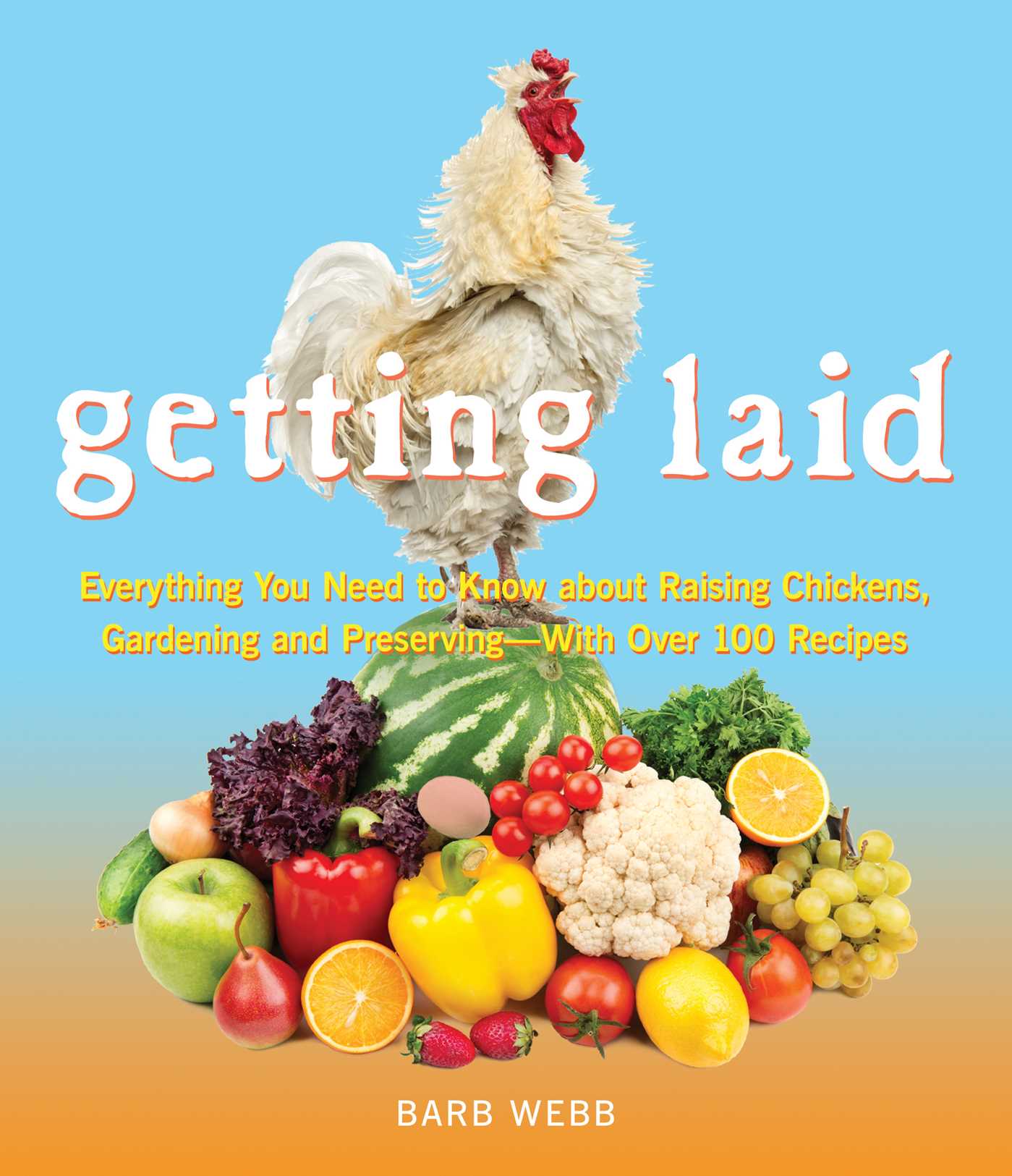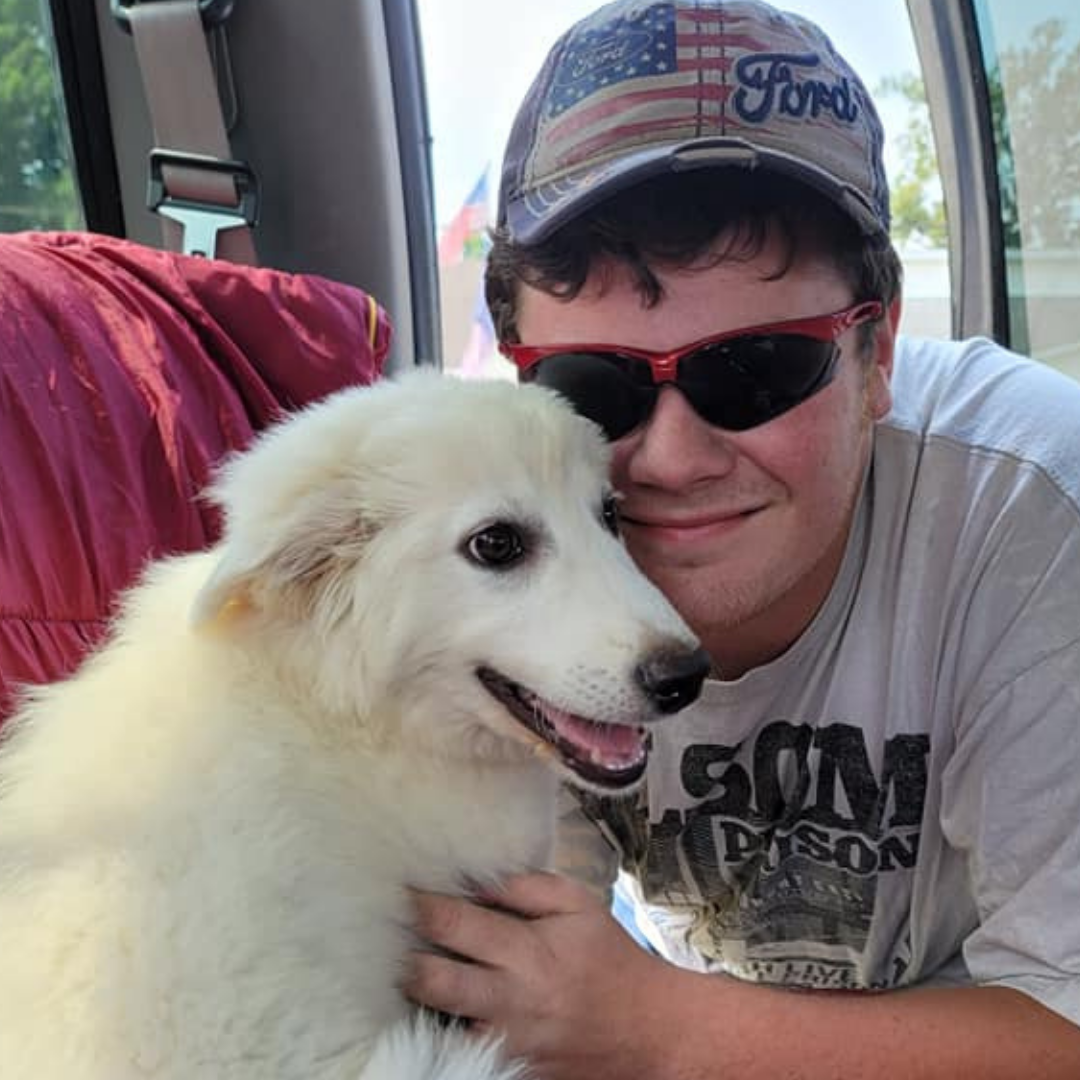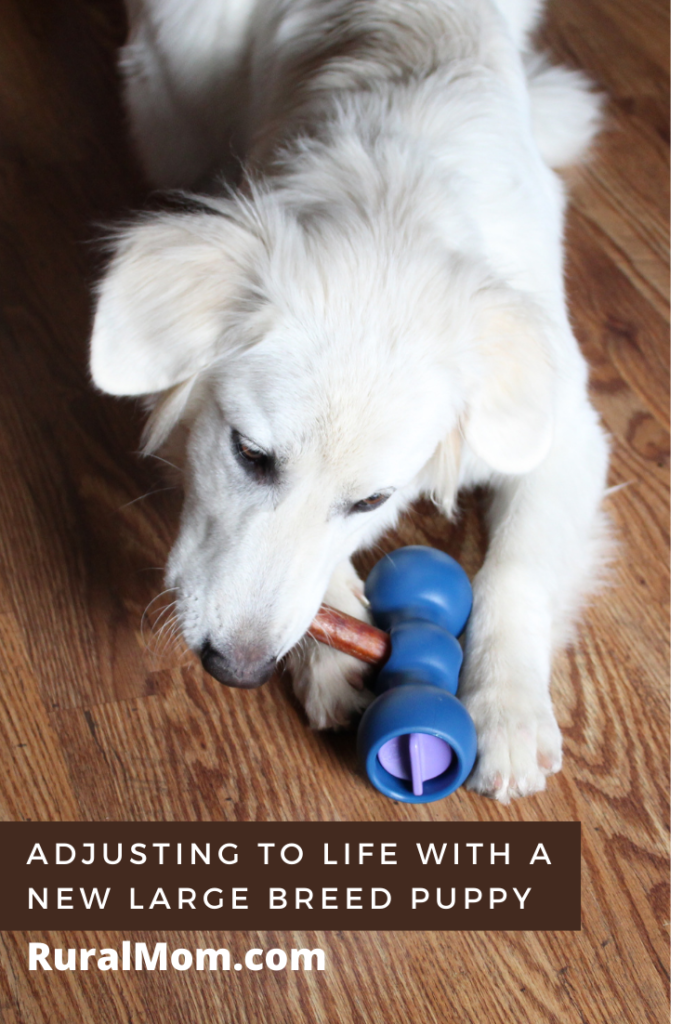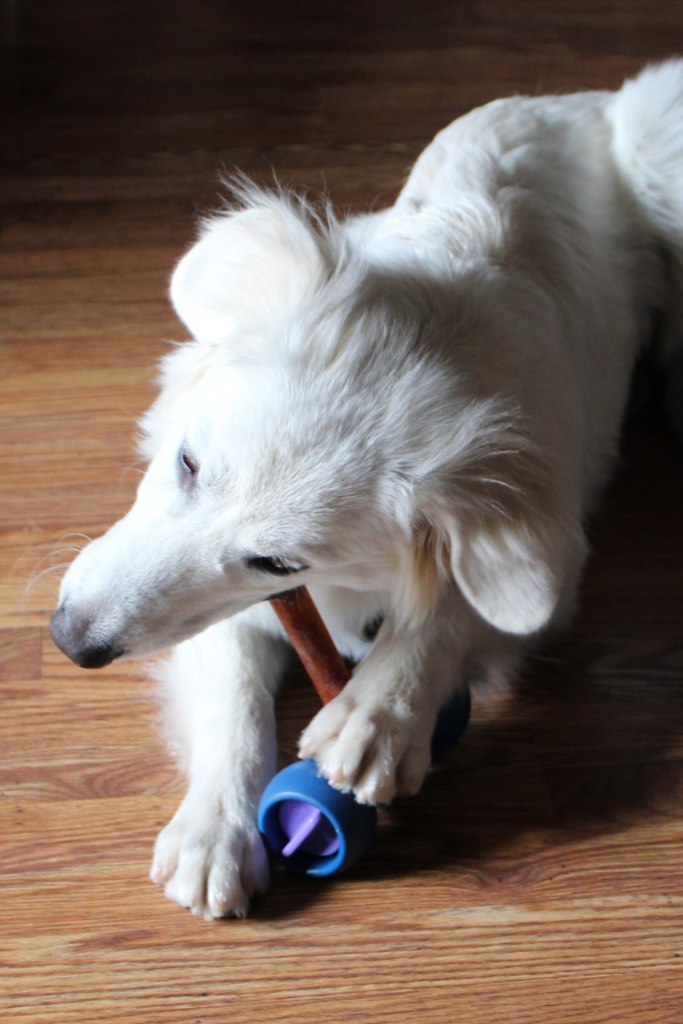It’s funny how quickly you forget how much work new large breed puppies are! After we lost our two farm dogs to old age, it was tough to consider getting a new dog. Losing a treasured family pet is never easy and a new puppy on the farm wasn’t something we imagined at the time.
Fast forward a few years… my eldest son really wanted us to add a large breed dog to our farm family again. When the timing was right, we rescued an adorable Great Pyrenees and Lab mix. She has certainly filled our heart and home with much joy!
She has also filled our home with plenty of chaos. From adjusting to our farm cats to potty training issues, we quickly remembered raising a large breed pup can be quite the challenge.
We’ve certainly learned (and re-learned) plenty inf the past few month. If you have or are considering a new puppy, here’s a few important tips on adjusting to life with your new furr-friend.
First consideration: Patience
Puppies need constant attention and constant love. It’s tempting sometimes to yell or throw a fuss when they do something wrong. Try to stop and remain calm. Do let your pup know the behavior is not acceptable but also reward your pup when they follow the rules. Take time to teach, not just discipline. Positive reinforcement of good behaviors is far more effect.
We watched a lot of videos on large breed puppy training and also enrolled in a local training class. Each new puppy has individual needs. It helps to have experts help you work with your puppy to ensure you’re training with the most effective methods.
And all of the training methods require a great deal of patience. Puppies, like children, make take a long time to learn new behaviors. With encouragement and patience, you will help guide them successfully. Hang in there!
Clinical Pet Nutritionist, Johnna Devereaux also suggests giving your dog 3-4 weeks to break out of their shell, become familiar with their new surroundings/routine, and to trust you.
“Manage your expectations,” says Devereaus.”ot all dogs came from a good home the first time around and they need time to learn that you are going to be their furever home—trust them, love them and treat them kindly! They’ve been through a lot!”
New Large Breed Puppy Safety
It may go without saying, but be sure to puppy-proof your home. Large breed puppies are vacuums. They will eat pennies, lint, soap, wires, and anything within reach.
One thing we missed considering on day one were cat toys. While they may be ideal for our feline friends, they are not appropriate for puppies. Be sure to pick them all up and only set out when the puppy is not around. Or designate a cat playing area that the puppy cannot access.
The same holds true for other items in your home. Such as, if you don’t want your pup to shred your clothes, shoes, or toilet paper, keep them out of reach.
Now, with a clean puppy proof house, you can little by little introduce your pup to temptation. Be prepared to firmly say “NO!” when they approach the item. Make sure they know it is off limits. Eventually, they will grow in to well behaved dogs that won’t destroy your stuff.
Despite our best efforts, we still have a curious large breed puppy who likes to pull things out of garbage cans from time to time. She understands the word “no”, however, and immediately stops when confronted. Again, it’s a matter of patience to keep a watchful eye on her and correct actions as they occur.
Food and Treat Safety
A positive step we took with our new puppy was to research food options. We also spoke with our vet and got their recommendations. We wanted the best affordable option to help our pup stay happy and healthy.
This did mean transitioning the puppy off of the food they had prior to our rescue. As much as we felt the food was inadequate, this transition needs to be slow. Abrupt change of food can be harmful to a dog and cause digestive stress.
We’re also mindful of treat options. Introduce one treat at a time. This way if it causes digestive or other issues, you’ll quickly be able to know the source. It also pays to research treat options and learn what may be harmful ahead of time so you can avoid giving those treats to your dog.
Devereaux suggests providing long-term appropriate chews to help pups relax. Chewing releases serotonin that relaxes them. Bow Wow Labs, Inc. has developed a new product, Bully Buddy (pictured above) that enusres your dog is safe while chewing on the much-loved bully stick treat.
Bully Buddy is a durable, easy-to-use, veterinarian-vetted, and dog-approved device that tightly secures bully sticks, preventing dogs from choking on the tail-end of the treat. The tightening ring keeps bully sticks secure, and dogs can really appreciate this feature as opposed to working their paws to keep a loose bully stick in place. Learn more at: https://bowwowlabs.com/.
We tried Bully Buddy with our new girl and it was love at first chew! She continues to enjoy the Bully Buddy toy even when we don’t have a bully stick in it. Definitely ranks high on our must-have for new large breed pup treat list!
Potty Training Your New Large Breed Puppy
Barricading a large breed puppy in a kitchen full of newspaper or leaving him in a crate until you’re ready to take him out is not going to teach them anything.
Devereaux says it’s best to never force your pup to go into the crate or safe area. Instead make it very inviting so the pup enters of its own will (think treats, blankets, toys, etc) and leave the door open so they can enter (or leave) freely.
Effective potty training means taking the pup outside or to the paper every single time:
- he wakes up
- eats or drinks
- gets up to play
- after he plays
- starts sniffing around
- after siting on your lap.
If you are training indoors, cover a under bed box lid or crate tray with newspaper. Encourage the dog to understand this is the “business” spot. Some people opt to line the tray with wood chips or even dirt to make outdoor training easier.
Even though our dogs are primarily outdoor farm dogs, it’s ideal to have an emergency tray. This way, if the dog is inside for any length of time and you miss the signs, they still have a safe spot to go. The idea is to associate the outdoors or tray as the place to do “business”.
Every time I bring our pup to the spot I say “potty”. This way, the pup will know while were out walking when I say “potty” it means this is the place to do it. Not on my neighbors lawn, or on the sidewalk. She should only go where and when I say “potty”.
Last new pup advice: Exercise!
A good long walk is essential, but when they are little you have to judge what distance is appropriate. Like babies, puppies tire quickly. An ideal walk time is a half hour. An hour if you have what’s considered a high energy dog.
As a general rule a deep chest with a narrow waist means they have a large lung capacity to move efficiently. (Huskies, beagles, terriers, Dalmatians, for example are high energy).
The walk actually serves multiple purposes.
- Keeping them healthy and active
- Burning off energy that may be misdirected elsewhere – like into tearing up home furniture
- Teaching them to follow the leader – you.
This is not to say that large breed puppies won’t have those moments of insanity when they tear around the house anyway. Regular walking simply helps them burn off extra energy before they rest.
If you have a yard where your new puppy can run free and get some much-needed exercise but don’t have a fence, consider investing in a wireless GPS dog fence as an easy solution. With a wireless fence, your dog has the space to move and explore while still being safe and close to home.
Some puppies also enjoy fetching, hide and seek, or hide the toy, as well for exercise. Teaching tricks for treats can be good, too as this teaches the pup to come, sit, lay down, and the basics of training.
Tug of war with toys can sometimes breed possessive behavior. However, there are some large breeds where this is instinctual and can be a positive play time with your pup. Again, do your research to see what is best for your dog breed.
If you do opt to play tug of war, don’t use socks because a large breed puppy can’t tell the difference between a toy sock and your clothes or pillows. Select puppy toys that are specifically designed for this activity.
Enjoy Your New Large Breed Puppy!
The best part of living with a new puppy is giving them hugs and love when they are sitting quietly and being good. It shows them that good behavior is rewarded with love.
Have fun, begin training as early as possible, and you will both quickly adjust to a happy, fulfilling life together!






I sure miss having a doggy!! We’ve only had the large breeds, and I love them. Our last one was my husband’s lap dog, and he was almost 100 lbs. ha/ha Great tips for people not familiar, though. Sharing this!